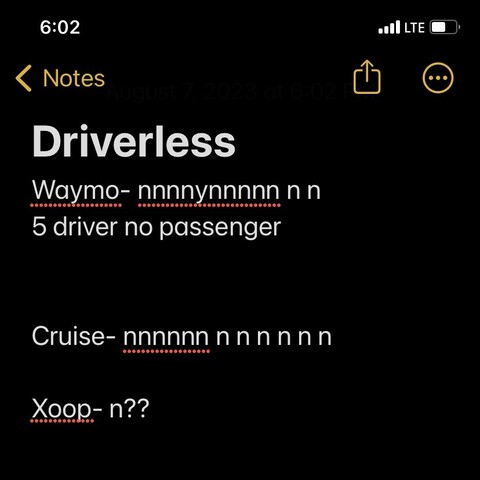Have you ever noticed that most self-driving cars don't have any passengers?
"Deadheading" is an industry term for keeping driverless cars in constant motion, even when they have neither a passenger nor a destination. Waymo & Cruise rely on deadheading to avoid paying for parking.
Why pay the city for public parking when you can store your car on the road for free (as long as it's moving)?
Since I've started keeping track, I've noticed that over 90% of the self-driving cars I see are empty...


